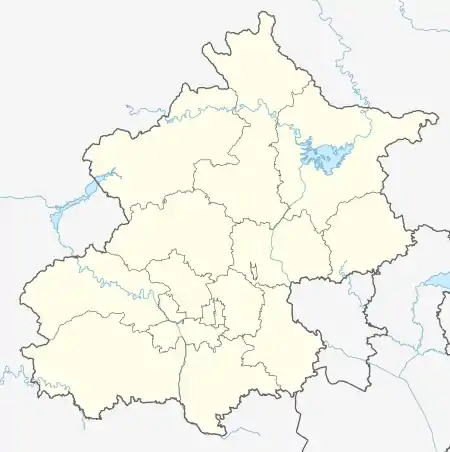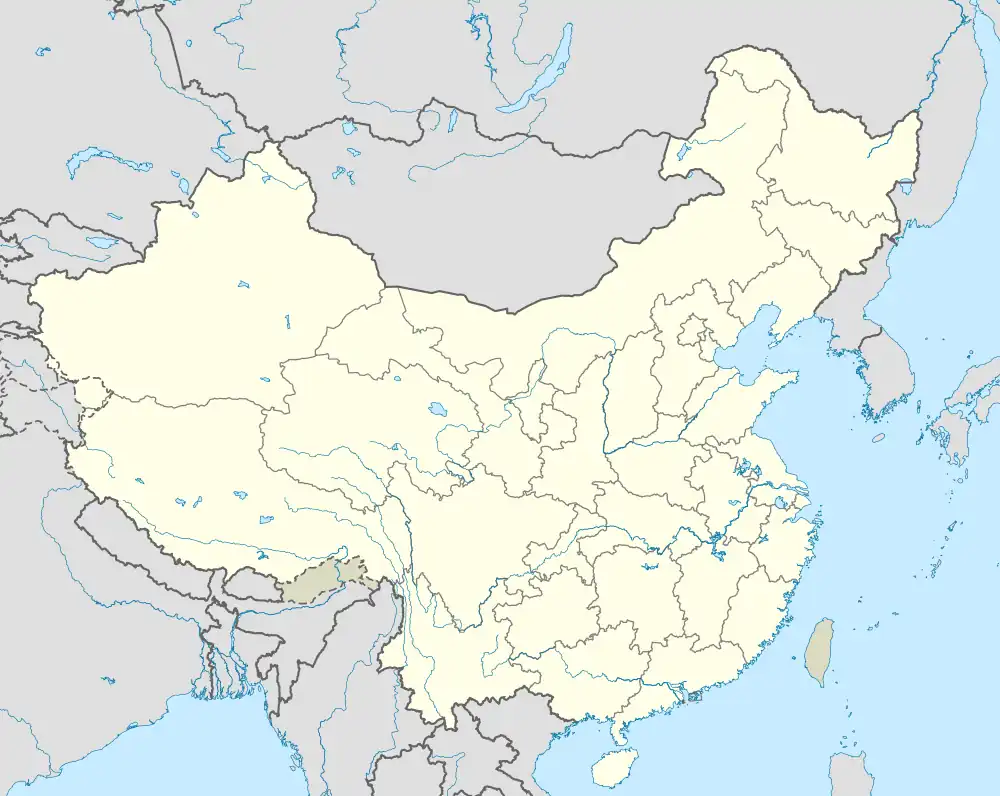Jingshan Subdistrict
景山街道 | |
|---|---|
.jpg.webp) The government building of the Dongcheng District | |
.png.webp) Location of Jingshan Subdistrict within Dongcheng District | |
 Jingshan Subdistrict  Jingshan Subdistrict | |
| Coordinates: 39°55′35″N 116°24′42″E / 39.9264°N 116.4116°E | |
| Country | China |
| Municipality | Beijing |
| District | Dongcheng |
| Village-level Division | 8 communities |
| Area | |
| • Total | 1.45 km2 (0.56 sq mi) |
| Population (2020) | |
| • Total | 25,374 |
| • Density | 17,000/km2 (45,000/sq mi) |
| Time zone | UTC+8 (China Standard) |
Jingshan Subdistrict (Chinese: 景山街道; pinyin: jǐngshān jiēdào) is a subdistrict in Dongcheng District, Beijing, China. It contains 8 communities. The subdistrict has a total area of 1.64 square kilometers, and as of 2020, it has a population of 25,374.[1]
The subdistrict received its current name from the Jingshan Park (Chinese: 景山公园; lit. 'Prospect Hill Park') that is located inside the subdistrict.
History
| Time | Status |
|---|---|
| 1912 | Part of 3rd and 6th Inner Districts |
| 1949 | Part of Dongcheng District. The following subdistricts were established:
|
| 1955 | Reorganized with only 4 subdistricts left: Nafu, Weishan, Jingshan and Mashi. The last one was merged into other districts at December of the same year. |
| 1958 | Nafu and Weishan were incorporated into Jingshan Subdistrict |
| 1960 | Reorganized into commune |
| 1990 | Changed back to a subdistrict |
Administrative Divisions
The table below lists the 8 communities under Jingshan as of 2021:[3]
| Administrative Division Code | Name in English | Name in Simplified Chinese |
|---|---|---|
| 110101002001 | Longfusi | 隆福寺 |
| 110101002002 | Jixiang | 吉祥 |
| 110101002003 | Huanghuamen | 黄化门 |
| 110101002004 | Zhonglou | 钟鼓 |
| 110101002005 | Weijia | 魏家 |
| 110101002006 | Wangzhima | 汪芝麻 |
| 110101002008 | Jingshan Dongjie | 景山东街 |
| 110101002009 | Huangchenggen Beijie | 皇城根北街 |
See also
References
- ↑ "China: Bĕijīng Municipal Province". CityPopulation.de. Citing: China National Bureau of Statistics (web), Bureaus of Statistics in Beijing (web). Retrieved 30 September 2020.
- ↑ Zhong hua ren min gong he guo zheng qu da dian. Bei jing shi juan. Li li guo, Li wan jun, Wu shi min, 李立国., 李万钧., 吴世民. Bei jing: Zhong guo she hui chu ban she. 2013. ISBN 978-7-5087-4058-4. OCLC 910451741.
{{cite book}}: CS1 maint: others (link) - ↑ "2021年统计用区划代码和城乡划分代码". www.stats.gov.cn. Retrieved 2022-09-17.
This article is issued from Wikipedia. The text is licensed under Creative Commons - Attribution - Sharealike. Additional terms may apply for the media files.